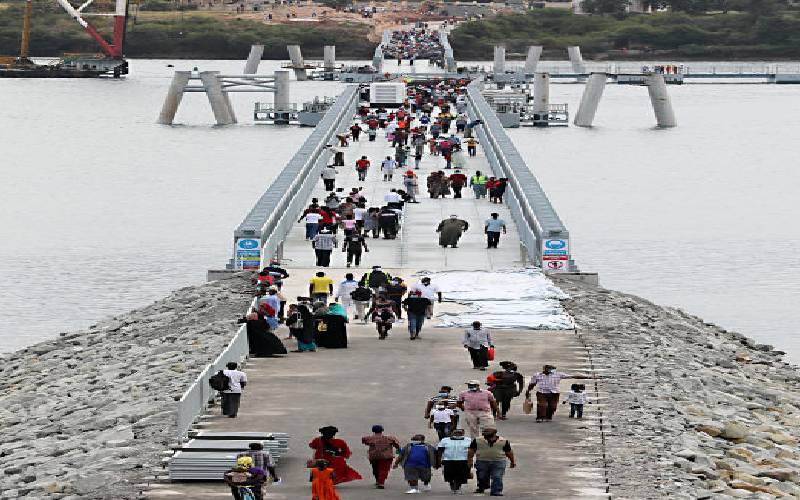×
The Standard e-Paper
Stay Informed, Even Offline

The Likoni floating bridge, which connects Liwatoni in Mombasa island to Ras Bofu in Likoni South Coast mainland. [Omondi Onyango, Standard]
Likoni ferry transport has witnessed heated politics for over two decades. However, this could finally ebb following the opening of the Likoni floating footbridge for public use on Friday.